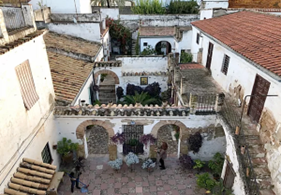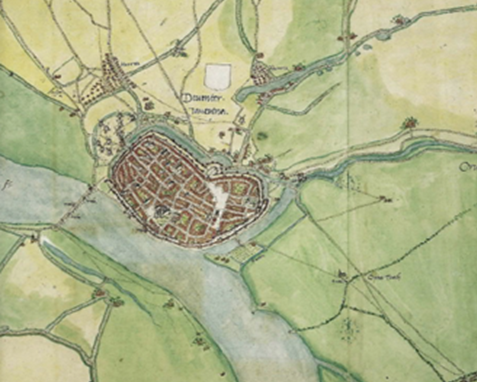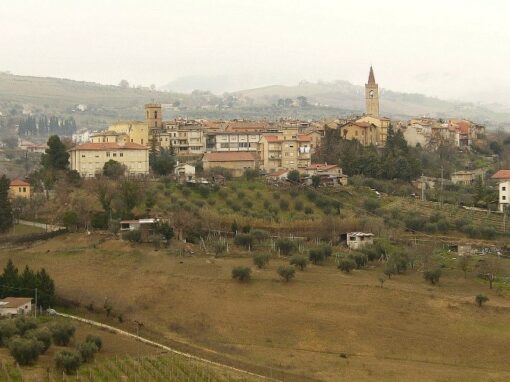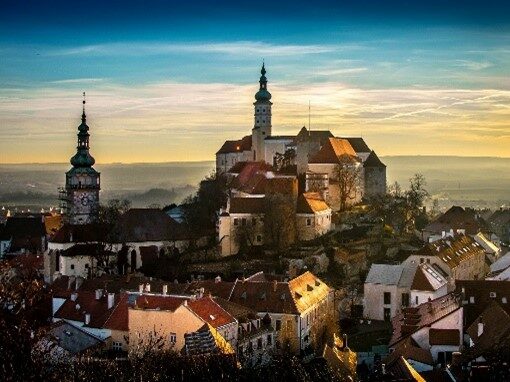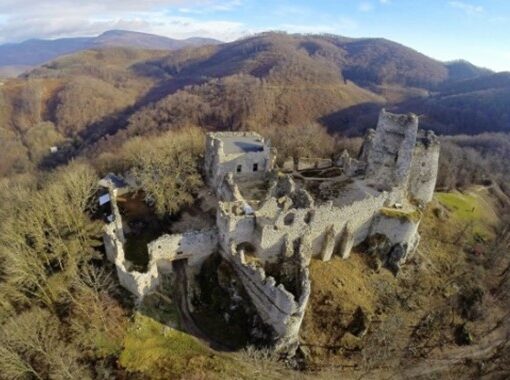City of Regensburg Integrated heritage management planning
Regensburg, Germany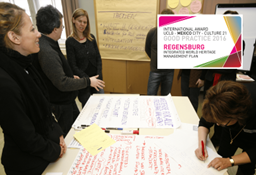
Lead
Main hazard(s)
Disaster Risk Management phase(s)
Type(s) of measure(s)
Background
The City of Regensburg was inscribed on the UNESCO World Heritage List in 2006. The city administration has consciously used urban heritage to stimulate development in the sense of the improvement of quality of life for the inhabitants, with the support of an integrated heritage management plan, developed using a methodology from the project URBACT II Project HerO (Heritage as opportunity).This integrated approach has been adopted by many European projects, most recently to COMUS (Community led urban development) together with the Council of Europe. The approach fosters a holistic understanding of the historic urban fabric and the development of joint objectives and actions. With the integration of regional and national levels, funding for many proposed projects was secured. Challenges for Regensburg’s urban heritage, like climate change or potential economic crisis were integrated in the concept. Today, heritage is part of the community’s perception of Regensburg’s identity and is diligently coordinated and communicated through an integrated governance system.
Sources
https://www.regensburg.de/welterbe/en/projects/completed-projects/management-plan
Interview with Mathias Ripp, Senior Expert for Heritage and Urban Development
Contact info
Sandra Schneider; Schneider.Sandra@regensburg.de
Matthias Ripp; Ripp.Matthias@regensburg.de
For more information, visit: http://www.regensburg.de
stadt_regensburg@regensburg.de
Detailed description
To develop the World Heritage Management Plan for the Old Town of Regensburg, the City of Regensburg (specifically the departments on heritage and environment) started continuous cooperation with cultural operators, artists and local residents in a process to shape the future cultural landscape and lay down the conditions under which art and culture can unfold in the coming years. The resulting document is known as the Cultural Development Plan “Agenda 2020”.The plan represents the action-guiding framework of cultural policy for the next few years. The cultural policy “Agenda 2020” is to be understood as part of the general urban policy. With this plan, the City of Regensburg honours its past and its cultural history and at the same time accepts current challenges. For assuring continuity and tradition on the one hand and the further development of a lively urban space on the other hand, the future role of a World Heritage title and its impact on civic life, and as part of this cultural life, had to be taken into account in the development.
The local authorities of the city prepared Regensburg’s management plan together with a strong community involvement (open access public participation) to identify several priority areas, concrete principles making use of the Historic Urban Landscape approach, objectives and key measures for each field of action needed for the city. In 2012, the World Heritage Management Plan was completed and made available online. The vivid public interest and engagement during the process shows the importance of civic participation especially in the field of heritage management and World Heritage. This collaboration brought a working group and a steady communication between stakeholders, where the public stays informed about the implementation of the management plan and takes part in its revision.
The World Heritage Management Plan for Regensburg was prepared by the Management Plan Work Group and the participants in the World Heritage Dialogue in Regensburg. Diverse stakeholders were invited to participate and collaborate in the elaboration process, amongst them not only city administration departments of all kinds, but also non-governmental groups within the city. In addition, regional level stakeholders as well as the regional government were integrated into the process and are still ensuring a broad representation of different opinions and interest groups.
Main outcomes and highlights
- The World Heritage Management Plan’s fundamental aim is to develop a new approach to manage historic urban areas by matching the inherited historic urban landscape and structure as well as the identity of the place with the modern demands of its users. This can be made possible by turning the cultural heritage, both tangible and intangible, into a prime resource to fulfil these competing demands, without downgrading its intrinsic qualities. All local stakeholders are to be identified and integrated into the process permanently, and a monitoring system has to further guarantee the successful implementation of the plan.
- The objective of this form of governance model of the World Heritage Management Plan of Regensburg was to not only detect and analyse the city in the spirit of the historic urban landscape (HUL) but also to entitle and capitalize on a governance system in which as many elements of the system as possible were considered. Even though the document was published in early 2012, the implementation is updated on a regular basis until now (with two updates having taken place, the most recent in 2019).
- Concrete action points were included on a range of themes including: tangible cultural heritage, culture and tourism, economic development, housing, mobility, urban planning and development, environment and leisure, awareness raising and research. With the participatory elaboration of an integrated heritage management plan, the direction for the upcoming years was recently set. Sustainability, resilience and the response to challenges and crises have been addressed following the six steps of the Historic Urban Landscape approach.
Sucess factors
- The plan has put a strong emphasis on community engagement and the participation of interdisciplinary experts (participatory governance model).
- The process of developing the plan has placed cultural heritage as top political priority ensuring local and regional authorities value their heritage providing leadership to local stakeholders within their communities and helping secure the right environment to attract investment.
- The initiative has engaged politically and managerially with stakeholders and the local community to ensure public support for the cultural heritage strategy and management plan and thereby develop a coordinated and balanced approach that is sustainable over time.
- There has been a strong focus on action and project delivery ensuring consistent political and managerial support and commitment.
Lessons learned
- Effective governance of UNESCO World Heritage Sites demands a reframing of the role of management plans as a tool to significantly improve community engagement at local level and to be aware of their limitations.
- Cultural heritage may sometimes be perceived as a constraint to urban regeneration; a limiting or burdensome preoccupation with the past that stifles innovation and progress; there is a need to re-frame its importance and role for resilient development.
- Heritage needs to be seen as a strategic opportunity; locally, nationally and at the European level. This requires a new integrated approach to the sustainable management of historic towns – one that is policy-led with a clear focus on access to resources and effective project delivery.
